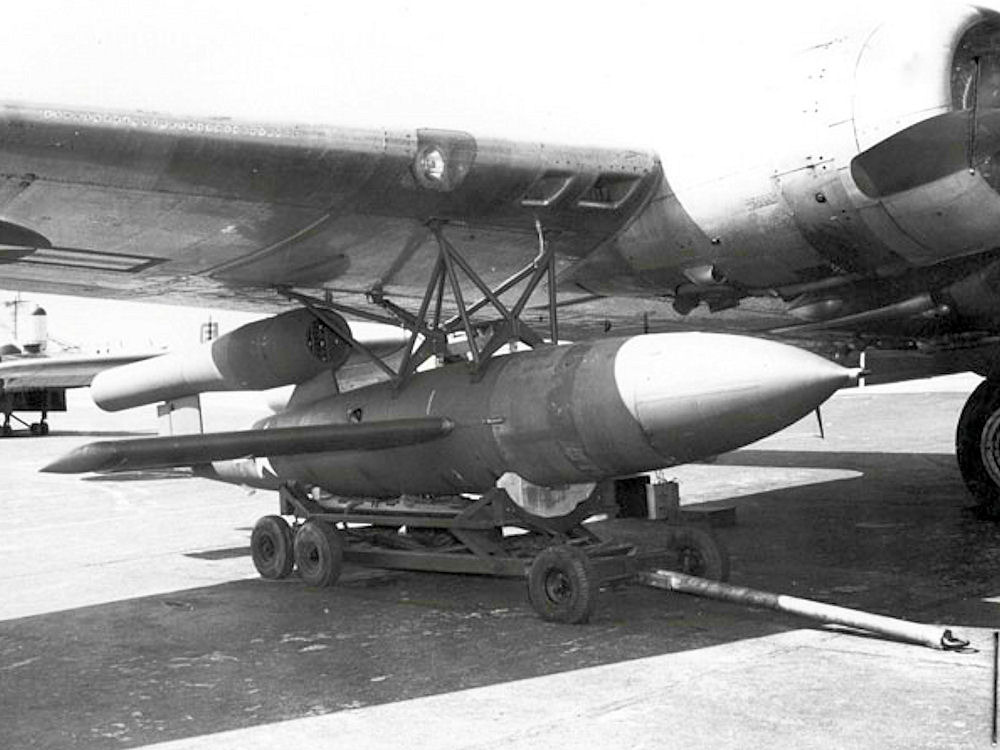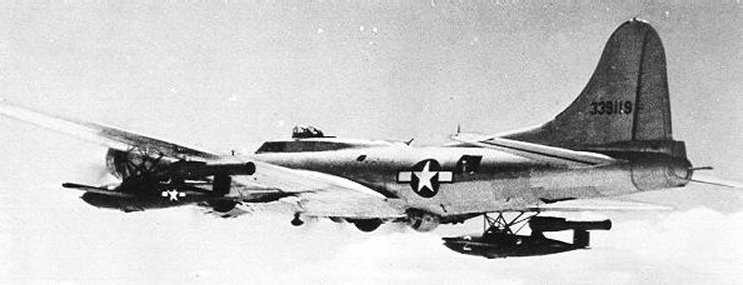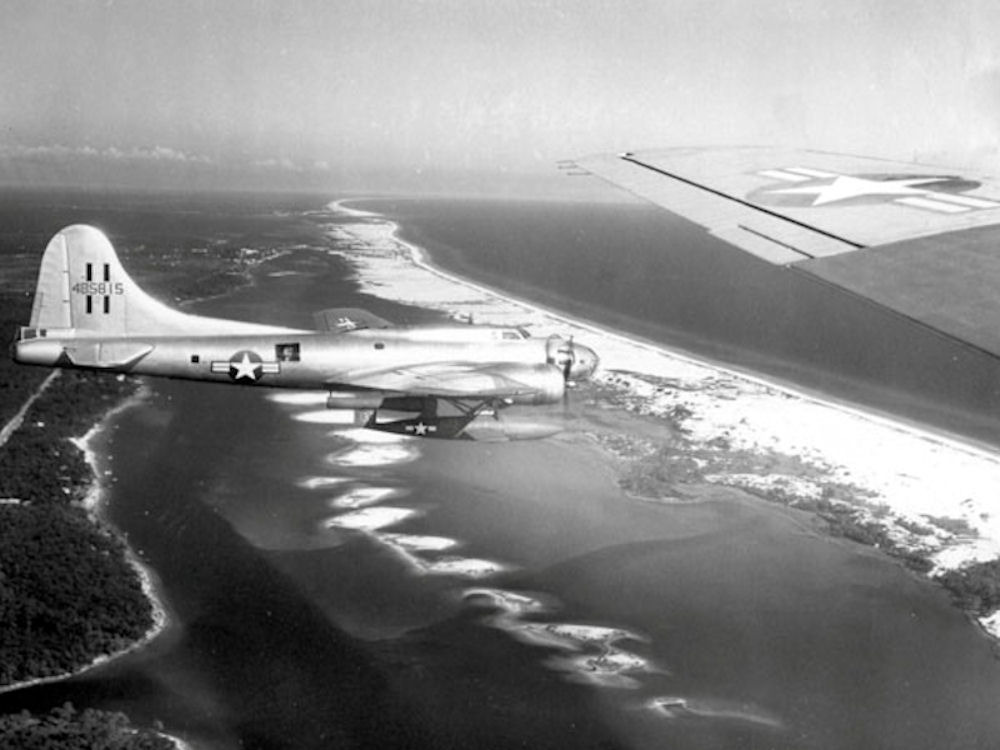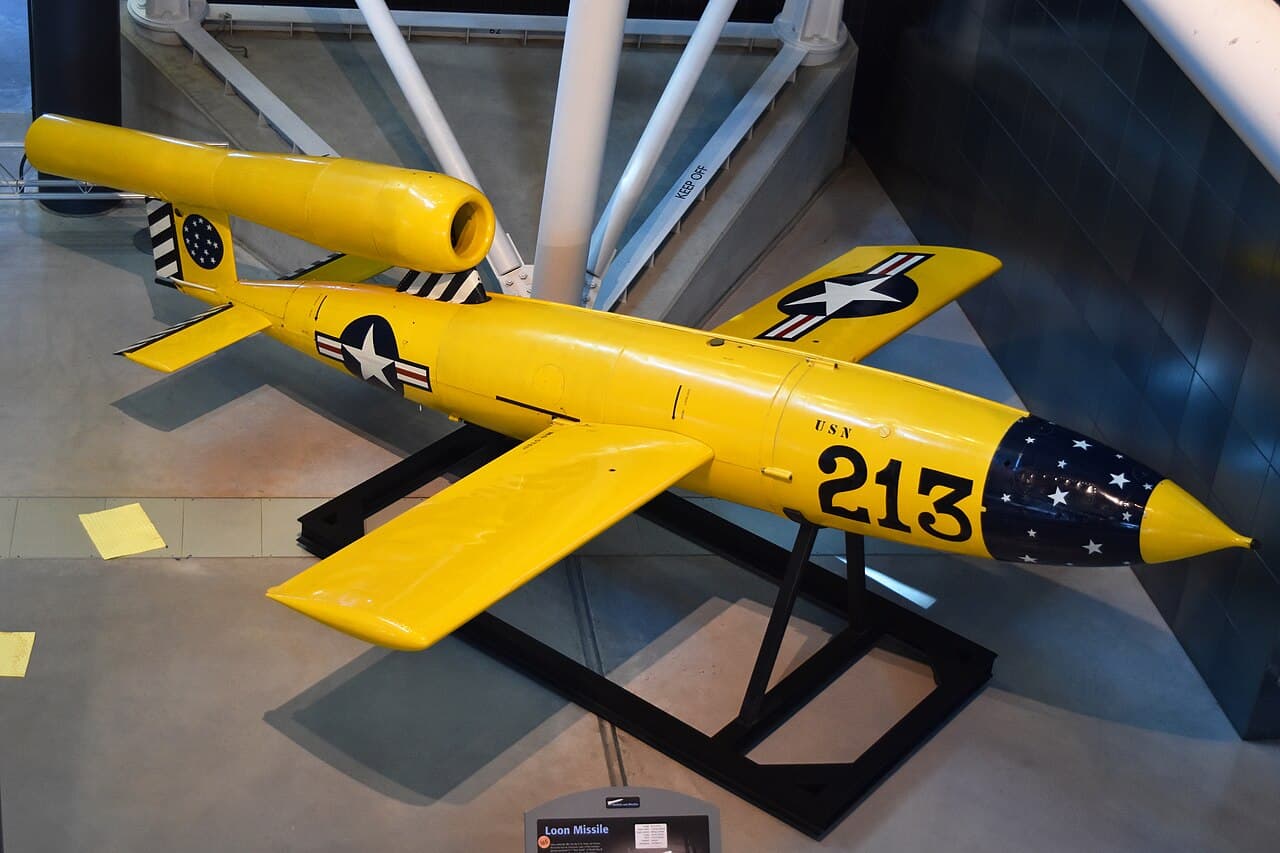- Yes
- No
The JB-2 flying bomb of the US Navy at the National Air and Space Museum.
Video of the launch of the JB-2 from the B-17G.
The Republic-Ford JB-2 Thunderbug is an American reverse-engineered version of the German V-1 flying bomb first produced in 1944. Unlike the German counterparts which were guided solely using gyrocompass, the JB-2 is a radio-controlled bomb, making it the first guided missile mass-produced by the United States.
This suggestion will focus on the usage of the JB-2 on the B-17G Flying Fortress, which has the most evidence of it being capable of using this weapon.
History
Spoiler

The JB-2 under the wing of the B-17G.
After the United States learned of the existence of the German V-1 flying bombs in 1942, a decision was made to initiate the “Jet Bomb” (JB) project to produce an equivalent.
Two years later, the United States received an example of the Argus As 014 pulsejet engine from the United Kingdom after the V-1 was being used for the first time in June 1944. Just three weeks later, a copy of the engine was successfully fired, later named the Ford PJ31. The USAAF then issued contract for the Republic aircraft company to produce a copy of the V-1 bomb, though due to Republic being preoccupied with production of the P-47 Thunderbolt, a decision was made to split the production to the Ford motor company, receiving the designation JB-2.

The B-17G with two JB-2 bombs mounted on its wings.
After the ground-launched tests in 1944, a decision was made to switch the guidance system of the JB-2 from the gyrocompass with radio guidance for better accuracy. Afterwards, testing was conducted in early 1945 on board the B-17G Flying Fortress by mounting two bombs onto its special wing hardpoints.

A B-17G with JB-2 bombs during test firing over Gulf of Mexico.
A total of 1,391 bombs were produced at the end of World War II in anticipation of Operation Downfall (the cancelled invasion of Japan). Although the JB-2 did not saw service in World War II, it provided valuable experience for the development of guided missile and air-launched weaponry for the future US Air Force.
Specifications
Spoiler
Length: 8.26 meters
Diameter: 0.86 meters
Wingspan: 5.36 meters
Total mass: 2,300 kg (5,000 lbs)
Shell weight: 1,700 kg (3,800 lbs)
Tail weight: 193 kg (425 lbs)
Filler: 910 kg of high explosives
Guidance: Radio-controlled
Sources
Spoiler
Republic-Ford JB-2 - Wikipedia
https://www.nationalmuseum.af.mil/Visit/Museum-Exhibits/Fact-Sheets/Display/Article/196227/republicford-jb-2-loon-v-1-buzz-bomb/
Quigg, Gary Francis (2014). JB-2: America’s First Cruise Missile (MA (History) thesis). Indiana University, Bloomington, Indiana: Department of History, Indiana University.
Mindling, George, and Bolton, Robert, 'U.S. Air Force Tactical Missiles 1949–1969: The Pioneers’, 2008, Lulu Press
Rosenberg, Max (1964). The Air Force and The National Guided Missile Program 1944-1950. USAF Historical Division Liaison Office.
Werrell, Kenneth P. (1985). The Evolution of the Cruise Missile. Maxwell Air Force Base, Alabama: Air University Press.


